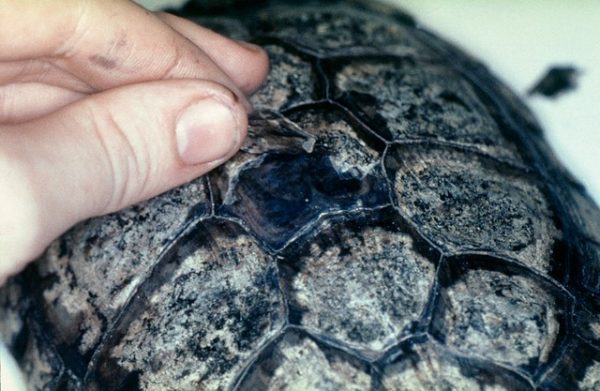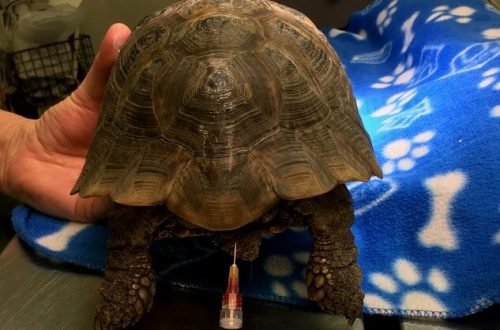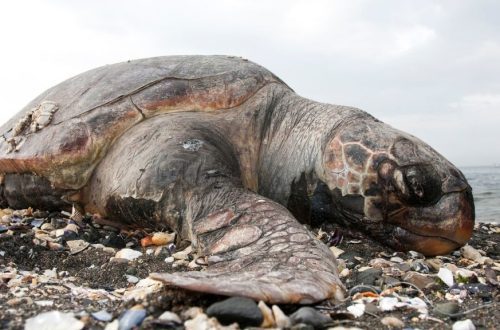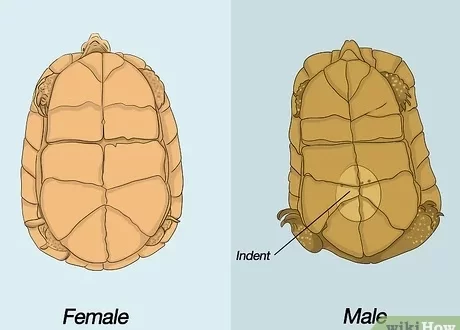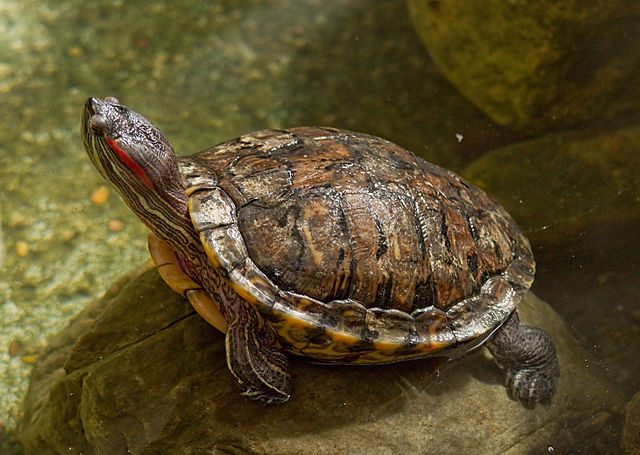
Rickets mu makutu ofiira ndi akamba: zizindikiro, chithandizo, kupewa
It is believed that keeping turtles at home is an absolutely easy and rather exciting activity.
Land and aquatic reptiles are distinguished by a calm disposition, good health and excellent appetite. But, in case of violation of the conditions of feeding and keeping, even such unpretentious pets get sick. The most common metabolic pathology is rickets in turtles. It is almost impossible to recognize the initial stage of the disease in aquatic and Central Asian turtles, and in advanced cases, specialists are not always able to save a sick animal.
Zamkatimu
What is rickets in turtles?
Rickets of water and steppe turtles is a metabolic disease associated with a lack of calcium and vitamin D in the body of an animal. In the absence of these two important elements, the animal has symptoms of softening of the shell, deformation of the skeleton and lower jaw. In the absence of treatment or severe pathology, most often the pet dies.
Although a serious illness and sad consequences can be avoided if an unpretentious animal is properly fed and maintained from an early age. Most often, rickets is diagnosed in very young pets who have not yet reached their two-year-old age. Quite rarely, pathology develops in mature and elderly individuals, but this is the exception rather than the rule.
In reptiles living in their natural habitat, pathology does not occur. This is due to the diet of wild aquatic and terrestrial turtles, which consume a huge amount of calcium-containing foods. For proper absorption of calcium, the animal’s body must produce or receive vitamin D from outside.
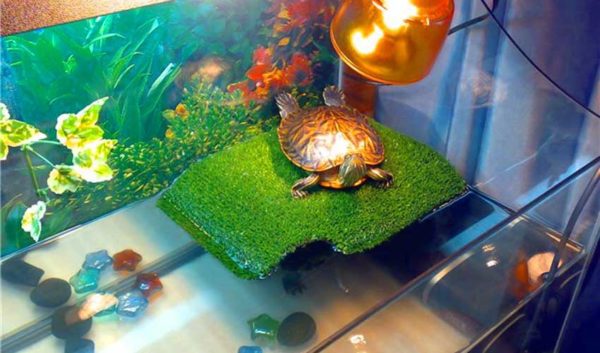
Wild turtles are exposed to ultraviolet rays for a long time, which promote the formation of cholecalciferol or vitamin D, resulting in complete absorption of calcium and mineralization of the skeleton and shell.
If this process is violated, mineral elements are washed out and the digestibility of vitamins and microelements is impaired. As a result, the skeleton and shell are deformed, the animal weakens, loses the ability to move and dies.
Zimayambitsa
A deadly pathology in small pets develops due to a banal violation of the rules for keeping turtles at home, an unbalanced diet, or the presence of chronic diseases.
Rickets in pet turtles develops as a result of the following reasons:
- lack of calcium and phosphorus-containing products in the diet of the animal;
- insufficient production of vitamin D in the body of a pet due to the lack of ultraviolet radiation;
- unbalanced monotonous diet;
- pathologies of the gastrointestinal tract, leading to impaired absorption of trace elements;
- kidney disease that disrupts the absorption of calcium by the body.
The pathology of metabolic disorders in advanced cases is quite difficult to treat. Before acquiring an exotic pet, future reptile owners are advised to learn the physiology and rules for keeping unpretentious animals so that the young turtle does not die at a young age from stupid human mistakes.
How to determine rickets
The first symptoms of the disease often go unnoticed, and with the development of a vivid clinical picture of rickets, degenerative changes remain in the animal for life. It is extremely difficult to cure a sick reptile on your own, therefore, in order to avoid aggravating the condition, if any signs of the disease are found, it is necessary to urgently consult a specialist.
Pond slider
Rickets in the red-eared turtle is manifested by the following classic symptoms of calcium deficiency in the animal’s body:
- softening of the shell, the scales crack and peel off;

- deformation of the shell – the dome falls through or strongly bulges, the marginal shields are bent;
- failure of the hind limbs, the pet cannot swim and get out on land on its own.
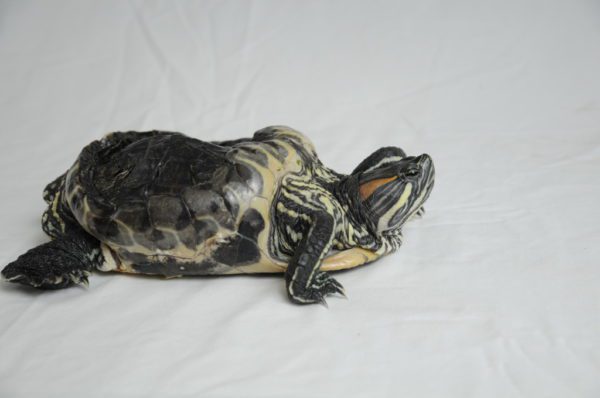
kamba wamtunda
Rickets in a land tortoise is also accompanied by a change in the appearance of the animal:
- the shell becomes soft, sometimes falls inward or looks bumpy;
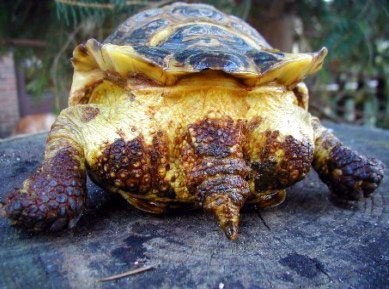
- scales of the dome are located unevenly, overlap each other;
- shields feel like soft plastic;
- the shell becomes very light, sometimes almost white;
- failure of the hind limbs – the turtle moves only with the help of the front paws.
Regardless of the type of reptile, in addition to changes in the shell, the following symptoms of metabolic disorders are observed in pets:
- swelling of the limbs and neck;
- kutupa kwa maso
- ulesi, mphwayi;
- kugona kwambiri;
- kusowa chilakolako;
- limb fracture;
- beak deformation;
- magazi;
- prolapse of the cloaca;
- kupuma pang'ono.
If the turtle fell ill relatively recently, only changes in the shell are noted in the animal, then the prognosis is relatively favorable, provided that you contact the clinic in a timely manner and prescribe the correct treatment. It is highly not recommended to smear the shell with oils or ointments on your own, give her drugs or give injections because of the risk of aggravating the condition of the pet and developing complications. With a long course of the process, the occurrence of fractures of the limbs, edema and paresis, the prognosis is almost always cautious or unfavorable.
Video: rickets in a land turtle
chithandizo
At any stage and severity of the pathology, it is recommended to treat a sick pet under the supervision of a veterinarian. Violation of drug dosage or injection technique can cause poisoning or instant death of a pet reptile. Treatment of rickets in turtles is reduced to replenishing the lack of calcium and vitamin D in the animal’s body, as well as eliminating the accompanying symptoms of the disease.
Scheme for the treatment of rickets in turtles:
- Subcutaneous or intramuscular administration of calcium-containing preparations: Calcium gluconate or Calcium borglugonate.
- Oral administration of a source of potassium and magnesium – Panangin.
- Daily irradiation with any ultraviolet lamp for reptiles for 10 hours.
- Injections of vitamin complexes – Eleovit or Tetravit.
- Introduction to the diet of supplements for reptiles and calcium-containing foods: fish, shellfish, snails and shelled shrimp.
- Therapeutic baths in a warm decoction of chamomile for 30 minutes a day.
- With the development of complications, intramuscular administration of antibacterial agents in a course of 7-10 days.
Treatment of rickets is quite long, depending on the severity of the course of the pathology, it can take from 2-3 weeks to 6-8 months. The main rule in the treatment of metabolic disorders: adherence to the diet and conditions of keeping domestic reptiles. With the development of systemic complications, it is sometimes more expedient to carry out euthanasia.
Prevention
To prevent the occurrence of rickets in a cute animal, you can follow simple preventive measures:
- feed the animal with a balanced diet with the obligatory use of fish, shellfish, vegetables, greens, liver, meat and vitamin and mineral complexes for reptiles;
- maintain the temperature in the aquarium at least 28C, and on land – at least 30C;
- irradiate the pet with an ultraviolet lamp for reptiles daily 10-12 hours a day;
- turn on the usual lighting lamps in the aquarium for 14-15 hours to maintain a long daylight hours;
- clean and disinfect the aquarium regularly.
Compliance with the rules of feeding and keeping aquatic or land turtles with the attentive attitude of the owner is the best prevention of metabolic disorders in unusually positive exotic pets.
Video: vitamin and calcium supplements
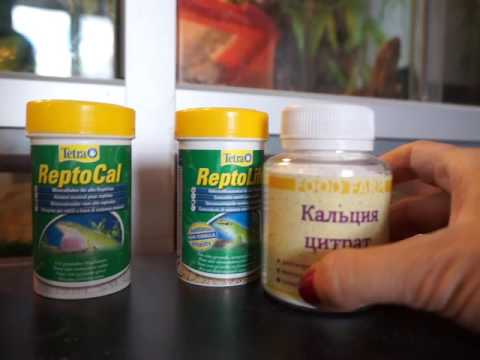

Yang'anani kanema iyi pa YouTube
How to treat rickets in turtles
4 (80%) 4 mavoti





